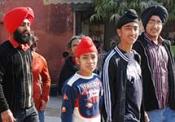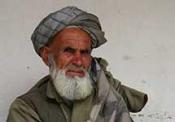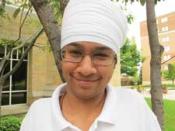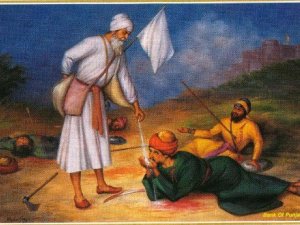|
When I was 8 years old, I was walking into Café Latte in St. Paul with my dad. A white woman, who looked to be about 70 years old, was exiting the restaurant as we were walking in. As a kind gesture, my dad told me to open the door for her. I opened the left door, but I guess she was planning on exiting through the right door. My dad told me people tend to open the right door in America, whereas people in Asian and African countries open the left door. I was young and didn’t know about this, so I was surprised by what happened next. After she passed us, she turned around and said something I would never forget: “If you don’t know which door to open, go back to your country.” I was shocked. First of all, I was born in the United States. Secondly, why did she say this to me, especially when I was an 8-year-old who was just trying to help? My dad told me that she probably thought we were Muslims since this was a few years after the terrorist attacks of 9/11. After the attacks, there was a backlash against Arabs and Muslims, including hate crimes. According to an annual FBI report on hate crimes, in 2000, there were 28 hate crimes against Muslims. In 2001, the FBI reported 481 hate crimes against Muslims. But Sikhs were also attacked. By February 2002 following Sept. 11, the FBI had already investigated 318 hate crimes against Arabs, Muslims, and Sikhs. The Sikh American Legal Defense and Education Fun receives about 10 complaints a year from Sikhs – most report being denied service at restaurants and bars for wearing a turban, said Amrita Singh, the organization’s legal and legislative affairs associate. The Sikh faith is a religion that started in India, not the Middle East. It’s common to wear turbans in both those areas of the world. The majority of Muslims don’t wear turbans, but some do, like Osama Bin Laden, who wore a white turban in the traditional Afghan style. When most people think of terrorists, I think they think of bin Laden, and then they think of white turbans and long beards, which is how a lot of Sikh men also look. You can teach people about Sikhs, Muslims and other South Asians, but you can’t teach people to not hate others. You can’t really change someone’s opinion on different races or ethnic and religious groups. The number of incidents when people have been kind to my family far outnumbers the times people have been ugly to us. A driver hit my brother while he was biking two years ago. The culprit drove off and left him there. Right away, another family stopped, made sure he was OK, and drove him home. The family asked if he was Muslim and where he was from, which was perfectly OK. I don’t actually care if people assume I’m Muslim. I care when they think all Muslims are potential terrorists. Some people say education can stop hate crimes. But education can end ignorance, not hate. People are going to hate. But I want them to hate the right thing – the line that people from every background have crossed in the name of beliefs: killing others for a cause. Terrorists have blown up planes, killing hundreds, because they want an independent Sikh state in India. I, and the majority of Sikhs, abhor these crimes. They crossed that line: they killed innocent people for a cause. Recently, an eight-year-old orthodox Jewish girl who was on her way to school in Israel was spit on and insulted by ultra-orthodox men for being immodest. Basically, she was dressed modestly – in a long skirt and long-sleeved T-shirt – but not modestly enough for the stricter beliefs of ultra-orthodox Jews. These actions are also unacceptable. These men crossed a line: they harmed a young girl for their belief system. After that woman yelled at me, I realized that some people weren’t going to know I was Sikh, not Muslim, and those people were going to react to me in a hateful manner just because of that resemblance. That incident didn’t change me into an overly wary person. But it did show me that this woman was OK with hating me for no reason. After all, haters are gonna hate. People of all backgrounds have killed innocents in the name of a belief. This woman’s mistake of grouping me with people who’ve done terrorist attacks is not just wrong; it’s dangerous. If that woman keeps associating people by their race or looks with a small, evil group of people, she won’t be able to spot the real threats in the world. Terrorists don’t have a “look,” but they all have a couple things in common: hate and violence. ------------------------------------
|
 A Sikh family walks in northern India. Photo by Thomas Schoch, public domain photo from Wikimedia Commons  Most Afghans prefer a darker shade of turban. You can see a piece of fabric trails down from this man’s turban, a clear way to distinguish between a traditional Afghan style of turban and Sikh turbans. Photo by Steve Evans from Citizen of the World, public domain photo from Wikimedia Commons  Osama bin Laden sometimes wore a white turban in the traditional Afghan style. Photo by Hamid Mir, public domain photo from Wikimedia Commons  |







